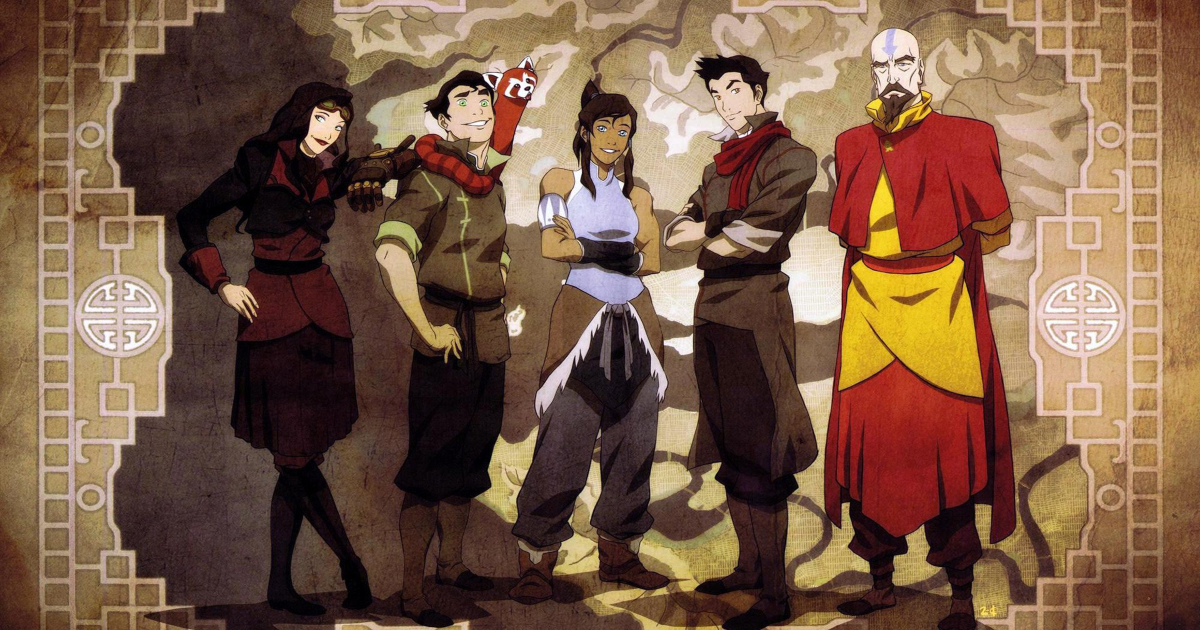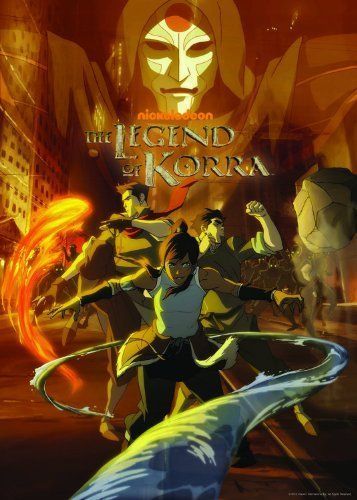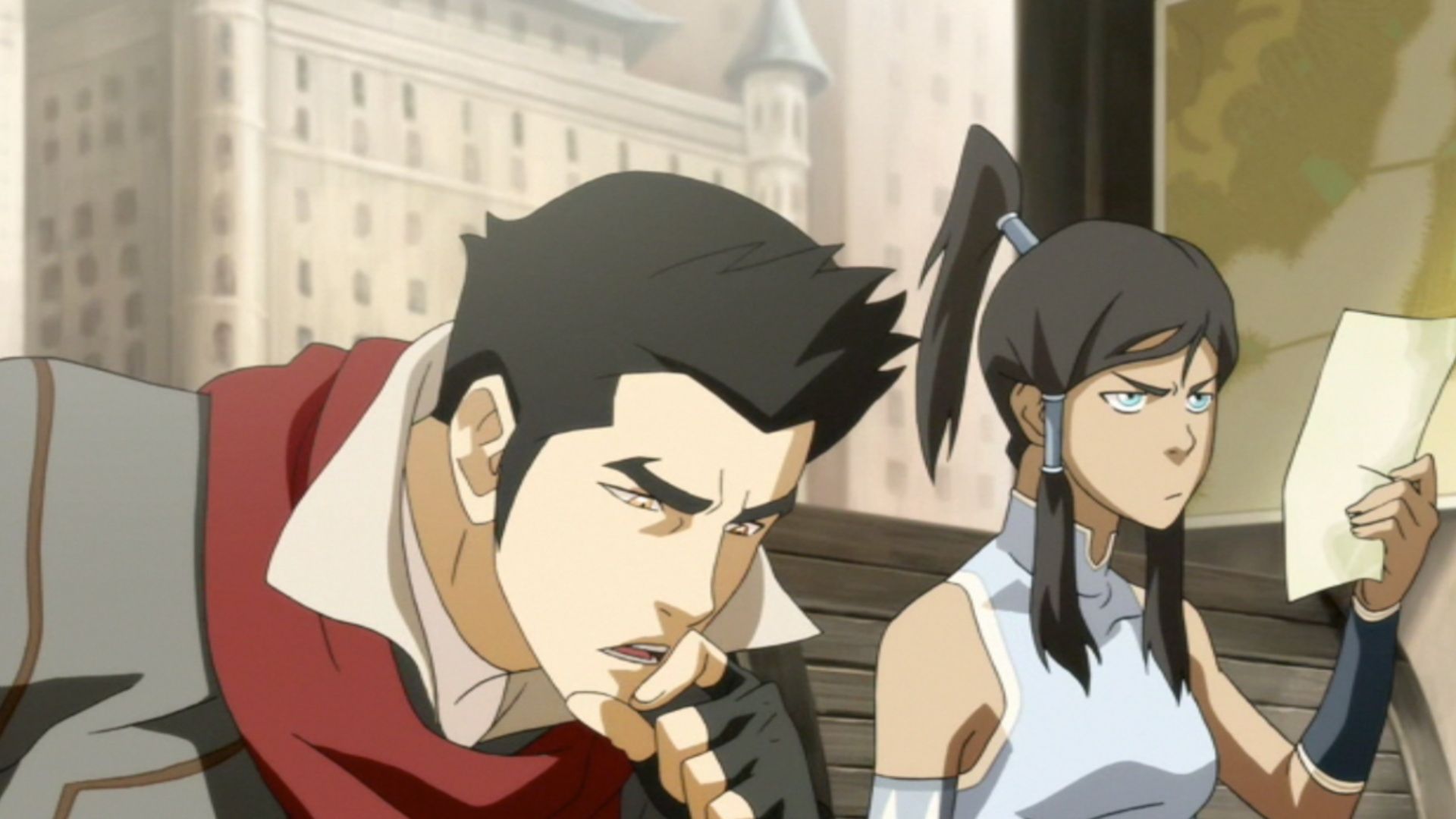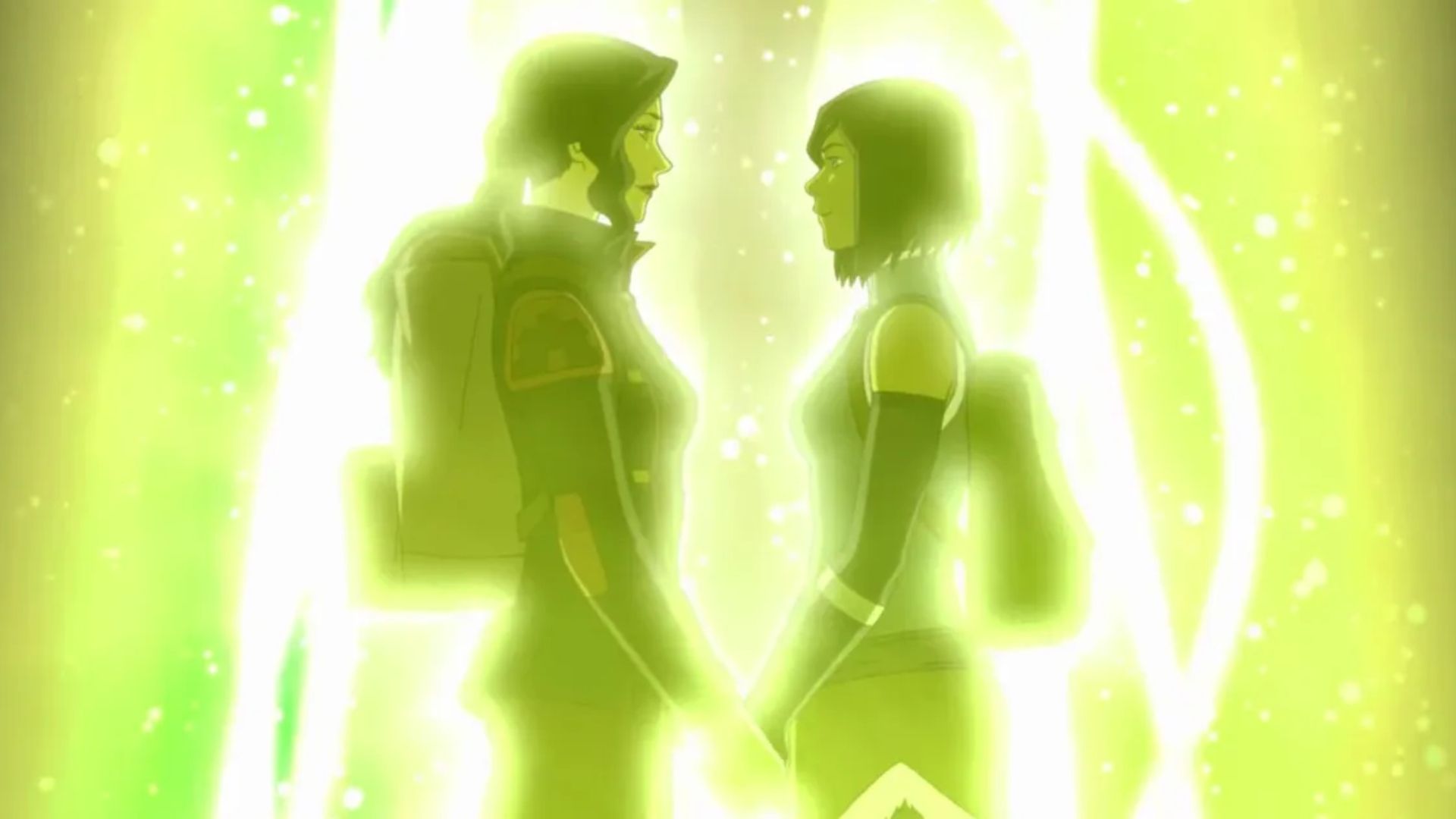After the major success of Nickelodeon’s Avatar: The Last Airbender, the creative team decided to make a sequel series set in the same universe of elemental benders. Under the direction of original creators Michael Dante DiMartino and Bryan Konietzko, the sequel show The Legend of Korra debuted in April 2012. The show follows a young Water Tribe woman named Korra, who is the next Avatar in the cycle following the death of Aang. Across four seasons, Korra progresses from a hot-headed, impulsive girl into a spiritual, fully realized Avatar ready for the next phase of her life.
While The Last Airbender was aimed at children, this series appealed to teens, introducing more complex romantic side plots and more brutal fight scenes. It even reintroduced older versions of familiar characters from the original story, such as Katara, Toph, and Iroh, as Korra’s guides, maintaining the connection to Aang’s life. Sadly, compared to its companion series, The Legend of Korra dragged behind in ratings, especially after the second season. Viewers felt the pacing was uneven and that the story was lacking. This led to the show eventually being taken off the air entirely and only airing online instead.
But the problems that caused it to fall off began when the studio made changes to the creators’ original plan and censored details that would have given the story more cohesion.
Lack of Faith in Female Characters
The greatest strength of The Legend of Korra was that it wasn’t trying to repeat the same story as The Last Airbender, and went in a more subversive direction with Korra’s character. Aang is introduced as a calm, pacifistic boy who avoids conflict whenever he can, whereas the volatile Korra runs headlong into it. However, the studio believed such a personality would not work on a female character.
Nickelodeon executives worried how audiences would feel seeing a protagonist like her, assuming that boys would be less likely to watch a show with a girl as the main character. They were hesitant to even let the show start running because of this. Luckily, when fans were asked about their opinion, the majority stated that Korra being a girl didn’t bother them. Even so, Nickelodeon did not push or market the series as much as they did for The Last Airbender.
Furthermore, the storyline of Asami Sato, whom Korra befriends in Book One, was changed as well. Asami’s father is revealed to be working with the Equalists, the terrorist group led by the villain Amon, arguably one of the show’s scariest villains. In the show, Asami is horrified by her father’s actions and becomes a permanent addition to Korra’s team.
But originally, the writers intended for her to be a member of the Equalists herself, who would eventually change her views the more time she spent with Korra and her crew. This idea was scrapped for the same reason that Korra’s character was doubted; the studio did not believe a female villain would bring enough viewers. While Asami’s character is explored more in later seasons, this storyline could have explored her family life and internal conflict much more.

Related
The Legend of Korra – Core Team Avatar Members Ranked by Skill Set, Powers, and Abilities
While Avatar Korra had a much smoother beginning to Avatarhood and life than the likes of Aang, a team and/or family was still pivotal to her success.
Indecision About the Show’s Duration
Since Nickelodeon had little faith in how The Legend of Korra would perform, they instructed their writers to make one season. Book One was intentionally written as a complete story, surrounding Korra’s new life in Republic City, facing down Amon, and learning about Avatarhood from none other than Aang’s son, Tenzin.
When it ended, fans clamored for more, to Nickelodeon’s surprise, and the writers had a new job to do. Unfortunately, since the studio did not prepare them to write Book Two, it was a rush job, pulling in the lowest ratings of the whole show. Fans complained that it felt unconnected to the first season, and that the new lore did not fit the established canon of The Last Airbender.
Despite low viewership, Nickelodeon approved two more seasons. Books Three and Four were written more cohesively, and many fans agree that this was when The Legend of Korra hit its stride. In comparison with the past two seasons, some believe the threat levels of the villains felt disordered, but overall many fans were pleased with Three and Four’s individual writing.
Near the end, however, ratings started to slip, so Nickelodeon made a pre-emptive move and pulled the show from the air. The last half of Book Four aired solely online, to the dismay of those who enjoyed the final season. It is highly likely that the show was removed from television due to the changing nature of Korra and Asami’s relationship.

Related
The Legend of Korra: Why it’s Such a Perfect Sequel to Avatar: The Last Airbender
The many differences between The Legend of Korra and Avatar: The Last Airbender might not be the only reason why the former is the perfect sequel.
Censorship of Queer Characters
In the final scene of the show, Korra expresses her desire to explore the Spirit World now that things are back to normal. Asami volunteers to join her, and they step into the portal together, hand in hand. The creators later confirmed that they fell in love with each other and realized it on that trip. Lots of fans enjoyed the idea of them becoming an official couple, but there was little hope that it would happen.
As groundbreaking as it was for LGBTQ representation, certain viewers felt their connection “came out of nowhere” or was too forced. But before the studio intervened, The Legend of Korra‘s writers intended to build it up from Book Three and officially confirm Korra and Asami’s relationship, but since the show fell hard in ratings after Book Two, Nickelodeon said no. In fact, what we saw at the end was the result of the writers’ long struggle to get the love story approved.
The final episode premiered online in 2014, before widespread approval of gay marriage, and before most mainstream shows dared to introduce queer love stories. Later, The Last Airbender writers released comics that further explored Korra and Asami’s relationship and established how the world of Avatar views LGBTQ individuals. This expansion proved to be a wonderful improvement on The Last Airbender and its story. Had Nickelodeon’s execs gotten their way, we likely would not have as many current shows with great queer representation, such as The Owl House or She-ra and the Princesses of Power.
As we learned from the writers’ strike of 2023, the final script is heavily affected by the studio’s treatment of its writers. Plenty of fans love The Legend of Korra as it is, but had it been handled better by Nickelodeon, it would have been an even better sequel series. Stream on Netflix or Paramount+.

- Release Date
- April 14, 2012
- Creator(s)
- michael dante dimartino , bryan konietzko
- Seasons
- 4
Source link



















Add Comment